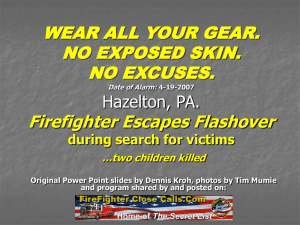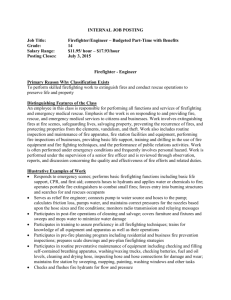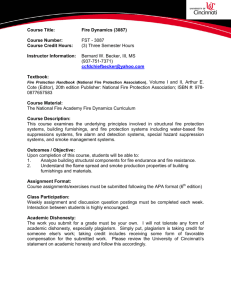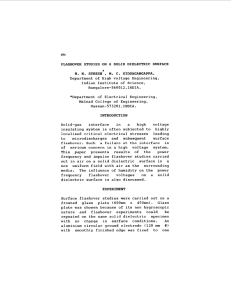UL: Analysis of Changing Residential Fire Dynamics and
advertisement
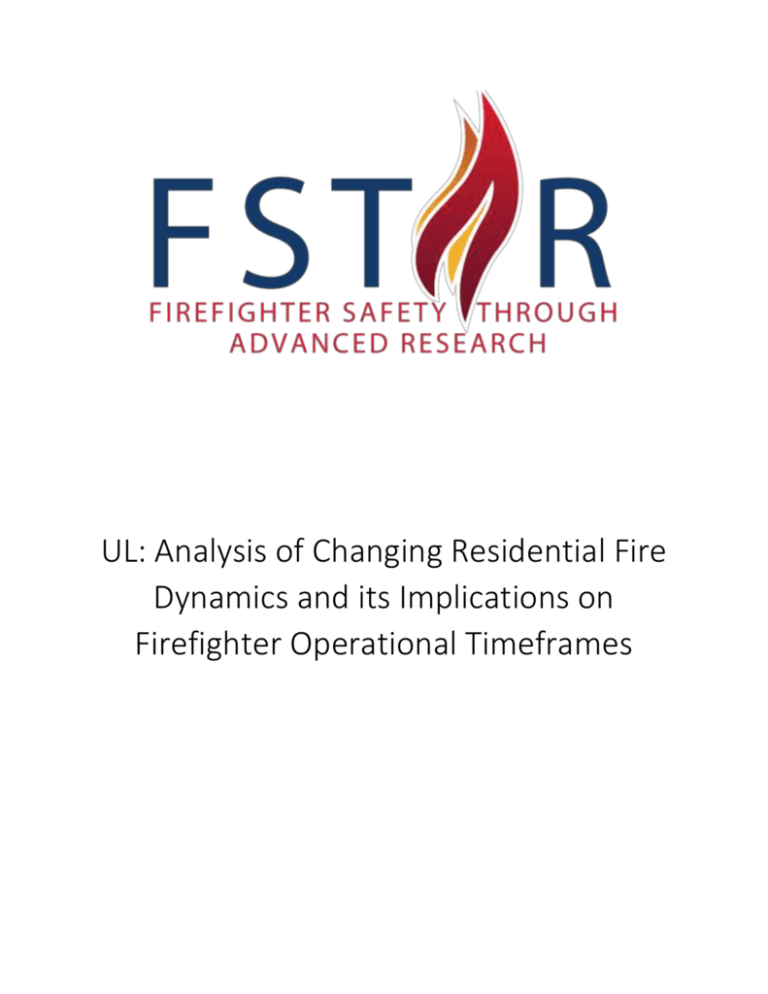
UL: Analysis of Changing Residential Fire Dynamics and its Implications on Firefighter Operational Timeframes timeframe for a legacy room to transition to flashover was 29 minutes. Synopsis UL’s analysis examines the all-encompassing effect from changes in residential environment in terms of fire dynamics and the implications for firefighter tactics. UL’s study examines the impact of the modern residence on fire dynamics and its impact on firefighting tactics. The residential fire conditions that firefighters arrive at today are very different than the conditions faced several generations ago. The steady change in residential fire environment includes: Demonstrated that the fire has transitioned to flashover in most cases prior to arrival of fire service or at the very least crews will encounter a ventilation limited fire. Faster fire propagation Modern window & interior doors fail faster than legacy counterparts. The change in modern dry wall linings now allows for more content fires to become structure fires. Fire penetrates wall lining and fills the void and allows for faster fire propagation. Larger homes (increase in two story homes) Open home geometries (taller ceilings, open floor plans, two story foyers, great rooms) Shorter times to collapse Home Contents/Increased synthetic fuel loads (plastics and textiles) Modern home construction techniques have removed components that had prolonged collapse. After unit arrival at eight minutes from ignition, collapse is possible as soon as 1 minutes 30 seconds later; the legacy room fire collapse hazard begins at 40 minutes after arrival. New construction materials (engineered products, green/sustainable items). UL compared the changes in home contents and construction materials through six experiments contrasting modern and legacy living room contents across three pairs of living room fires. Then the findings from these experiments were examined in the context of firefighting operational timelines. Takeaways The six experiments revealed that fire dynamics change rapidly in today’s modern rooms Shorter resident escape times The impact of ventilation (flow paths) is the key to the fire development in structures Fire departments must reexamine their tactics to ensure they are still relevant within this evolving fire environment Read the Report Faster flashover Modern rooms had flashover occur in less than five minutes, the shortest http://www.ul.com/global/digitalassets/hcp ages/newscience/images/firesafety/docs/Analysis_of_Changing_Residen Page |2 tial_Fire_Dynamics_and_Its_Implications_o n_Firefighter_Operational_Timeframes.pdf

